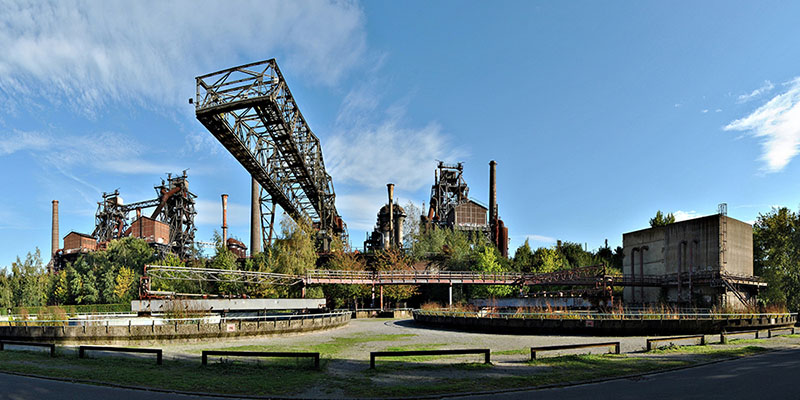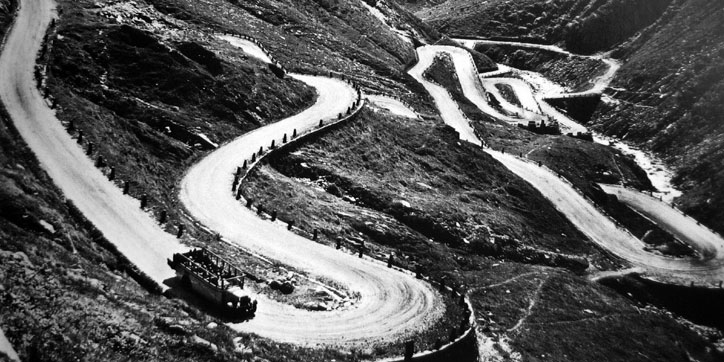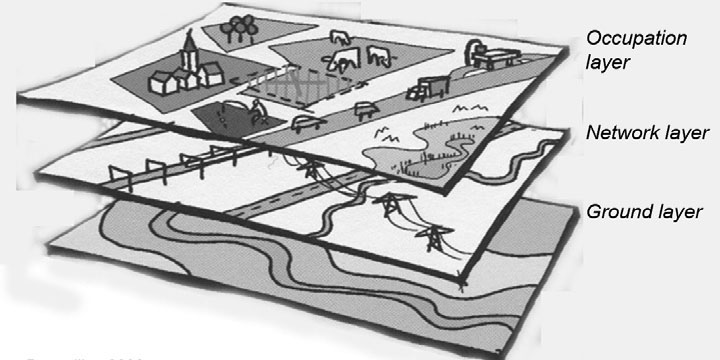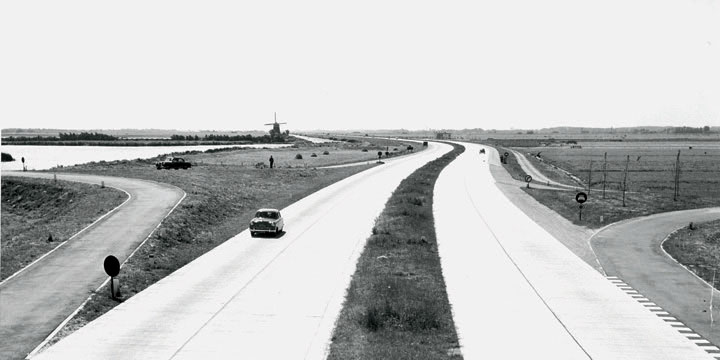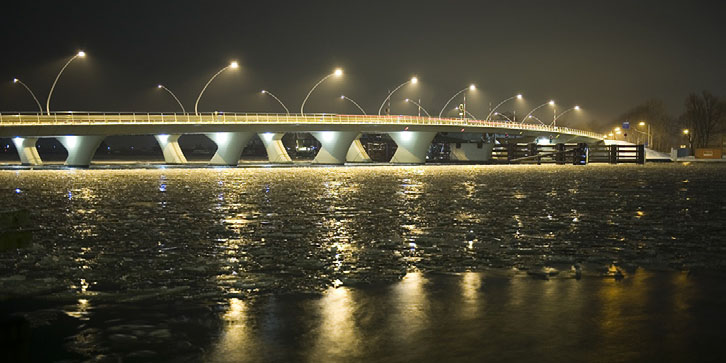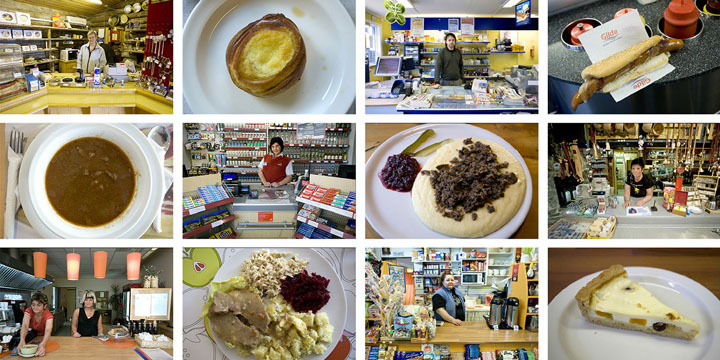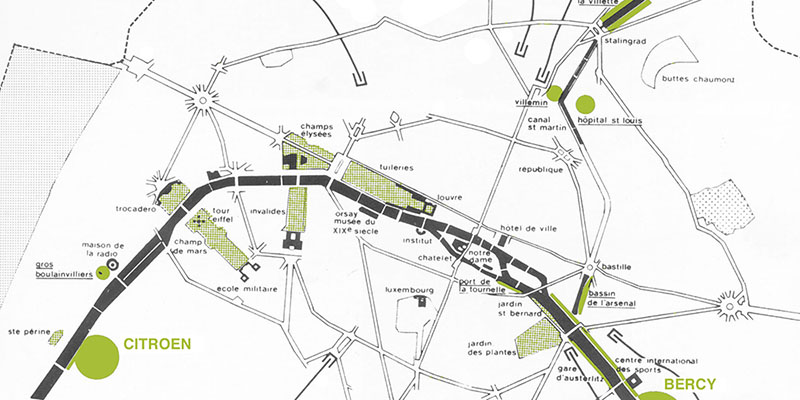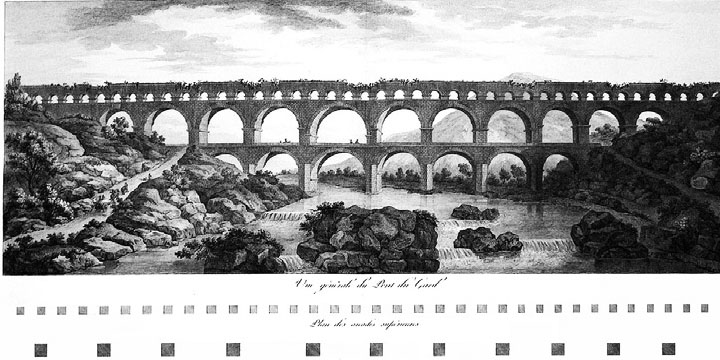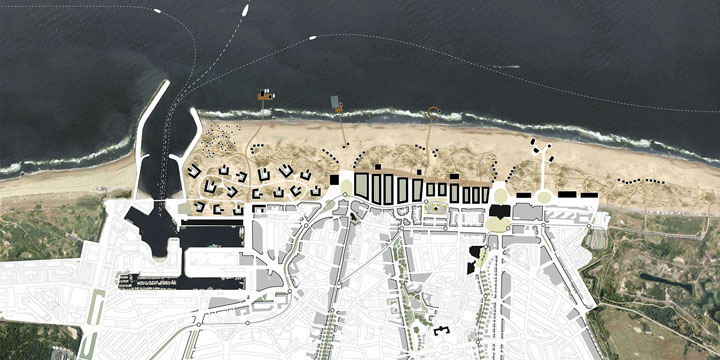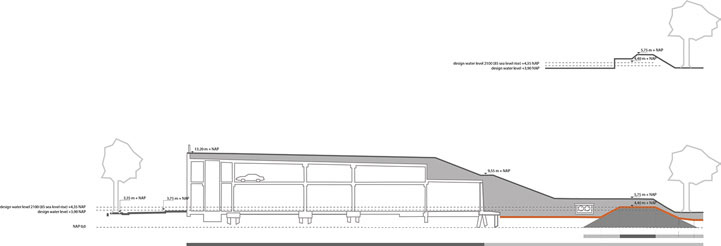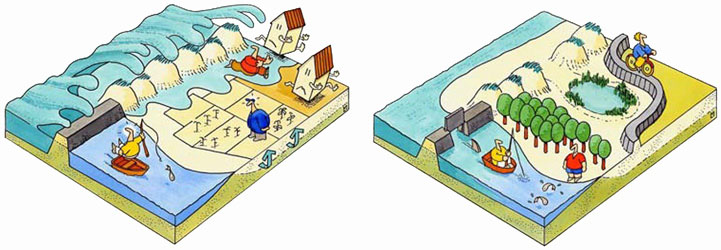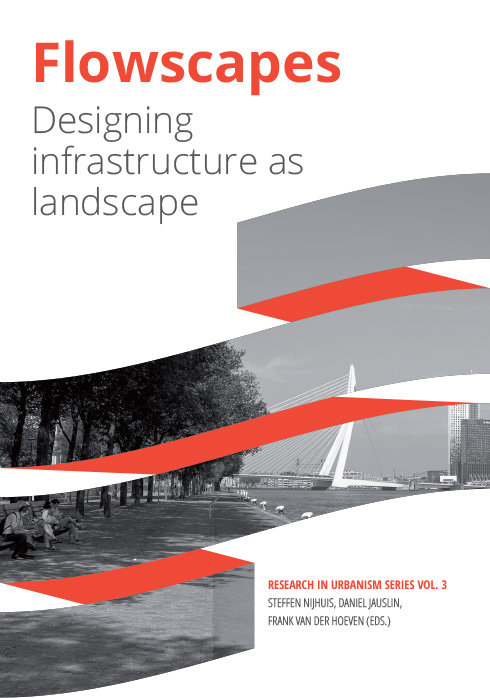
Flowscapes explores infrastructure as a type of landscape and landscape as a type of infrastructure. The hybridization of the two concepts seeks to redefine infrastructure beyond its strictly utilitarian definition, while allowing spatial design to gain operative force in territorial transformation processes. The publication provides perspectives on the subject from design-related disciplines such as architecture, urban design, urban planning, landscape architecture and civil engineering. The book builds upon the multidisciplinary colloquium on landscape infrastructures, that is part of the Flowscapes graduation design studio of Landscape Architecture at the TU Delft.
The authors explore concepts, methods and techniques for design-related research on landscape infrastructures. Their main objective is to engage environmental and societal issues by means of integrative and design oriented approaches. Through focusing on interdisciplinary design-related research of landscape infrastructures they provide important clues for the development of spatial armatures that can guide urban and rural development and have cultural and civic significance. The geographical context of the papers covers Europe, Africa, Asia and Northern America. All contributions in the book are double blind reviewed by experts in the field.
BOOK DATA
Publisher TU Delft // Book Editors Steffen Nijhuis, Daniel Jauslin, Frank van der Hoeven // Publication date April 2015 // Pages 324 // Full colour // ISBN 978-9461864727 // Price €37 / $40
Articles
-
This paper explores infrastructure as a type of landscape and landscape as a type of infrastructure. The hybridisation of the two concepts, landscape and infrastructure, seeks to redefine infrastructure beyond its strictly utilitarian definition, while allowing design disciplines to gain operative force in territorial transformation processes. This paper aims to put forward urban landscape infrastructures as a design concept, considering them as armatures for urban development and for facilitating functional, social and ecological interactions. It seeks to redefine infrastructural design...
-
Drawing on episodes involving the use (and abuse) of maps in Switzerland, this essay pertains to the geopolitical agency of cartography in the production of urban territory. Maps generate and maintain particular discourses about the world, whether factual or fictional, with very real repercussions either way for the territory depicted. The UN motion made by Libyan leader Muammar al-Gadaffi to wipe Switzerland off the map, for instance, discloses just how much sway the cartographic imaginary holds in global relations. Guillaume- Henri Dufour’s mid-nineteenth century map re-territorialised...
-
The two networks strategy is a guiding model for planning and design that takes the networks of water and traffic as carrying structures. Its origin is in the early 1990s when it resulted from research by design projects aiming at the generation of tools for making urban development and the urban landscape more ecological. Reviewing practical experiences is one reason to look again at the strategy. A second reason is to explore the possible contribution to current debates such as those about complexity, landscape urbanism and landscape as infrastructure. The origin of the two networks...
-
There still exists in the collective global imagination a ghostly ‘image of progress’ framed by a nature-dominating narrative that distorts reality. As living standards rise worldwide, the demand for natural resources is accelerating in a familiar pattern: cities eat the rural, and the rural eats the wilderness. Ecology, society and economy are not the either/or variables they are often portrayed as being: there is no society without ecology, and no economy without society, each is embedded in context. As globalised societies become increasingly urban, the notion that cities ought to...
-
The highways of the Netherlands are used intensively, yet most of us are unable to summon up as much appreciation for them as we can for an attractive square, park or landscape. Highways may well be component parts of our public space, but they are not part of our aesthetic culture. From the history of the landscape we know that the impressionability of the poet and the depiction of the painting were needed to train the gaze. Appreciation follows representation. Is there a schematic organisation of visual perception that could assume the role of yesteryear’s landscape painting in the...
-
This paper discusses design considerations for creating high quality infrastructural artefacts with an emphasis on bridges. The authors pursue a design study and analysis approach to highlight the specifics of infrastructure design for regional identity, based on their own work on a bridge ensemble in the Dutch Zaanstreek region. Two highlights of this work, the award winning Juliana Bridge and the wildlife crossing in Rijssen, are used to illustrate how to create good infrastructure design in sensitive contexts, without making use of neo-vernacular methods.
-
This paper takes the reader on a road trip, travelling the longest highway routes of the European continent and drawing conclusions based on a methodology of practical observation. The paper introduces a phenomenalist approach to highway design research, based on using photos and observations as a source of evidence in its own. The research is based on twelve weeks of driving, shooting photos, sleeping along the road, eating only in road-side restaurants and interviews with waitresses and shopkeepers. There used to be a lot of attention for the scenic experience and spatial quality of...
-
Over the last centuries, the global food system has managed to provide a growing global population with more and better food. Yet, the system is criticised for its negative effects, like increasing food miles, monocultures, a lack of transparency and poor animal welfare. The recent trend to farm more food in an around cities (urban and peri-urban farming) seems to provide an alternative to the existing system. Urban and peri-urban agriculture (UPA) comes with many potential benefits, from reducing food miles and improving local urban climate to supporting social coherence in local...
-
The appreciation of green infrastructures as ‘nature’ by urban communities presents a critical challenge for the green infrastructure concept. While many green infrastructures focus on functional considerations, their refinement as places where concepts of nature are represented and where nature can be experienced and understood, has received little attention in research and praxis. Contemporary urban societies entertain varied and distinctive ideas on nature and their relationship to it, themes explored in contemporary urban park and garden design. These projects can provide insights...
-
In a critical review this chapter shows how the Yokohama Ferry Terminal by Foreign Office Architects crossed the three distinct realms of ‘infrastructure’, ‘architecture’ and ‘landscape’. This key individual project dissolved disciplinary borders between the three disciplines and achieved new methodical grounds for design. It is a precedent in a general shift in the development of the design disciplines of the built environment. The single project shows how deep conceptual shifts affect the disciplinary assumptions that initially limited this task for architects–and how versatile the...
-
Coastal regions throughout the world are subject to flood risk challenges. This paper concentrates on the Netherlands; its coastline fulfils an important role in the protection of the Dutch delta. Due to the expected sea level rise, part of the Dutch coastline will have to be reinforced. Along most of the sparsely occupied coastline, the space needed for the reinforcement of the flood risk protection infrastructure can be found easily, either on the seaside or inland. However, some segments of the coastline have been built upon and are difficult to reinforce; buildings have limited the...
-
Due to the changing climate and increasing urbanisation delta cities are faced with an increasing flood risk. In The Netherlands many of the flood defence infrastructures, such as dikes and flood walls, need to be adapted or improved in the near future, to comply to current or improved safety standards. These improvements directly affect landscape and urban development. In its 2008 report, the 2nd Delta Committee presented the idea of multifunctional flood defences, which are flood defence structures that deliberately provide opportunities for other functions. Since then, spatial...
-
Decisions on measures to improve a flood risk system are in part supported by general ideas about how the system works and should work. After the completion of the Dutch Delta Works around 1990, such new ideas regarding flood risk emerged. Some of these may be appealing at first, but appear debatable after a closer look. In this paper, fourteen such debatable ideas, familiar to most Dutch water professionals, are formulated and criticised, in order to find out what can be learned from them. The most important Dutch national flood risk policy documents since 1990 are reviewed for quotes...
